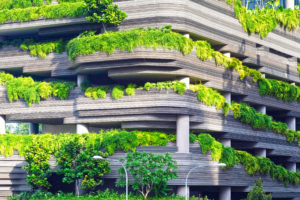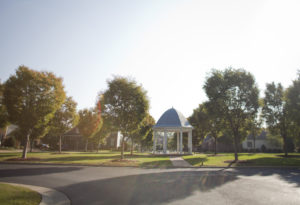Why being environmentally conscious is usually the “road less travelled”..
 If we went to a cocktail party and asked everyone what it means to be green, we’d get so many different answers. Some would say it means reducing waste. Others would want to adopt conservation-minded technology, like solar panels. Some would say it means eating less meat.
If we went to a cocktail party and asked everyone what it means to be green, we’d get so many different answers. Some would say it means reducing waste. Others would want to adopt conservation-minded technology, like solar panels. Some would say it means eating less meat.
In home construction, green can mean a bunch of different things: sustainable materials, the latest in energy efficient mechanicals, tighter envelopes, reduced consumption of precious resources. And no matter which tactic a builder takes, the effort to be responsible is important and noble.
So then what gives? There’s no doubt that being green, if we have the option, is the better choice to make. So why does it seem so hard to make substantial progress on this? Well, we can tell you why. Because way too often it’s easier, even more valuable, to be irresponsible than it is to be responsible.
Here’s what we mean…
Instant hot water heaters are more efficient and will lower utility bills, but they’re more expensive to install than the old tank-based hot water heaters.
Flooring a home with sustainable wood or using similar framing materials is going to drive up your costs. Same goes for low VOC paints. And you’re going to pay extra for extra insulation or HVAC units with higher SEER ratings.

Rooftop gardens and urban farming are among the “green” trends becoming popular in big cities across the U.S.
A builder might do all of this in service of earning green certification from one of the agencies that does that kind of thing (such as EarthCraft of VA). And it’s likely going to tack on an additional 3-5% more to the final construction tab. If you’re looking at a $400,000 home, that’s about $12,000-20,000. That is real money. Are people going to pay for that? Increasingly so, yes. But they’re not necessarily the ones getting in the way of progress.
What is then? It’s that little thing called the appraisal. When a home is purchased using borrowed money, banks are going to require an appraisal. And if the appraiser doesn’t give premium value for whatever green components are included in the construction, then the value is artificially depressed. It’s possible the deal gets more complicated. It’s possible the borrower has to pay a higher interest rate. It’s possible the borrower might need to bring more cash to the table. None of these scenarios is good. All could possibly stunt the expansion of green building.
And we need to do exactly the opposite. We need to encourage builders to build—and buyers to buy—new green homes. We can’t let mortgage lending be the tail that wags the dog, not on something this important. This is a time for policy makers and the markets to lead.
 Market Value (or Fair Market Value)
Market Value (or Fair Market Value) Now how do the assessors calculate that value? Well, they bring in a whole bunch of factors: size, age, beds, baths and location, as well as sales price of other ‘similar’ properties. They throw all of it into a calculator (okay, that’s not true) and an assessment value comes out. What’s interesting is that the town, city, or county doesn’t have to be perfect. They just have to be decently close. Because their ultimate objective is to generate enough revenue without disturbing the collective peace. And they have to fund the budget. So it’s natural for tax assessors to prefer that tax rates rise to raise revenue—that responsibility falls on lawmakers—instead of increasing assessed value, in which the assessor is the bad buy.
Now how do the assessors calculate that value? Well, they bring in a whole bunch of factors: size, age, beds, baths and location, as well as sales price of other ‘similar’ properties. They throw all of it into a calculator (okay, that’s not true) and an assessment value comes out. What’s interesting is that the town, city, or county doesn’t have to be perfect. They just have to be decently close. Because their ultimate objective is to generate enough revenue without disturbing the collective peace. And they have to fund the budget. So it’s natural for tax assessors to prefer that tax rates rise to raise revenue—that responsibility falls on lawmakers—instead of increasing assessed value, in which the assessor is the bad buy.  What do lenders do with the appraisal? They use that value to figure out the maximum amount of money they will lend against the property. The less debt there is against the value of the home, the more secure the bank will feel, and they tend to lower the interest rate. As an example, a bank might want 5 percent on a loan that is 90% of the value of the property. That rate might sink to 4% if the loan is only 80% of the value. An important thing to know: the bank uses the appraisal value and technically doesn’t care what the agreed-upon sales price is.
What do lenders do with the appraisal? They use that value to figure out the maximum amount of money they will lend against the property. The less debt there is against the value of the home, the more secure the bank will feel, and they tend to lower the interest rate. As an example, a bank might want 5 percent on a loan that is 90% of the value of the property. That rate might sink to 4% if the loan is only 80% of the value. An important thing to know: the bank uses the appraisal value and technically doesn’t care what the agreed-upon sales price is. But one person bought two lots in that subdivision and planted a 6,000 square foot home with an in-ground pool, the finest details throughout, a three-car garage. They spent $700,000 to build it. Could they sell it for that much? What do you think?
But one person bought two lots in that subdivision and planted a 6,000 square foot home with an in-ground pool, the finest details throughout, a three-car garage. They spent $700,000 to build it. Could they sell it for that much? What do you think?  One of my coworkers once showed a home where the owners kept a crow in a birdcage. The bird was furious and let us know in no uncertain terms.
One of my coworkers once showed a home where the owners kept a crow in a birdcage. The bird was furious and let us know in no uncertain terms.



 Raise Your Virtual Antennae
Raise Your Virtual Antennae



